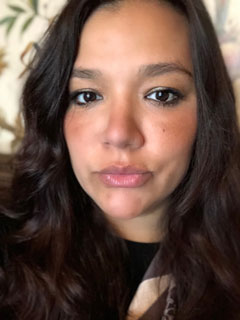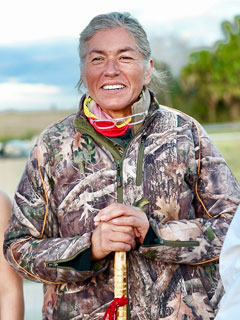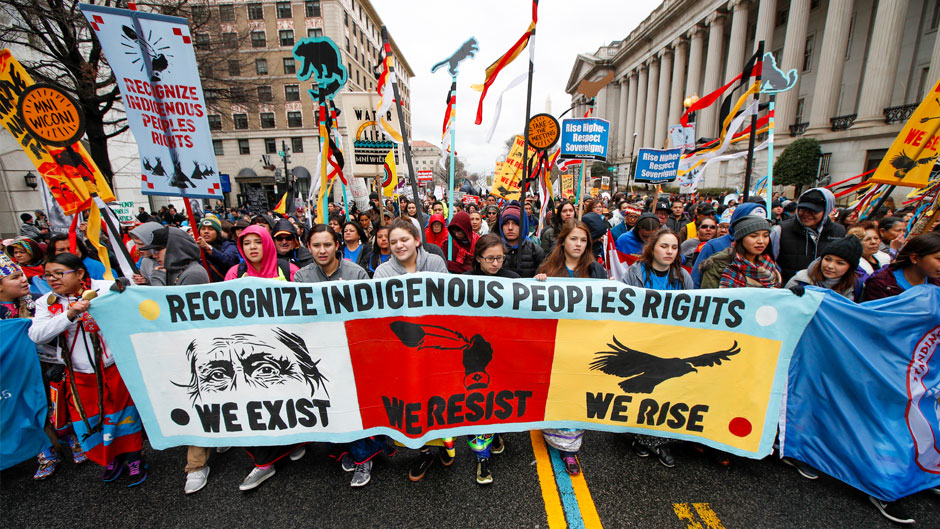Located on Seminole, Miccosukee, and Tequesta ancestral lands, the University of Miami has several ties to the Tribal Nations that neighbor its campuses or lived on its grounds.
This included its namesake, Miami, which refers to a group of Native Americans called the “Mayaimi” that lived around Lake Okeechobee in the 1500s and traded with the Calusa and Tequesta tribes, some of the earliest indigenous groups in South Florida.
Now, a group of faculty members is hoping that students at the University will be able to learn more about these indigenous groups. Some of them disappeared with the arrival of the Spanish conquistadors, and others that continue to reside in Florida, the United States, and the world through a new academic program titled Native American and Global Indigenous Studies (NAGIS). Their effort, propelled by a University Laboratory for Integrative Knowledge (U-LINK) social equity grant, aims to broaden awareness about indigenous peoples.
“We hope to make the indigenous past and present of South Florida, our hemisphere, and the world a more meaningful realm of scholarly inquiry and social engagement for the entire University of Miami community, recognizing the need to support and amplify Native American and indigenous voices,” said Tracy Devine Guzmán—associate professor of modern languages and literatures who is co-leading the U-LINK team and studies the relationships between indigenous people and governments in Latin America—at the group’s first event recently, a virtual conversation with Miccosukee environmentalist and educator, Betty Osceola. “We also want to provide new opportunities for undergraduates, graduate students, and the UM community to consider the complex histories, lived experiences, and perspectives of Native peoples in relation to multiple areas of knowledge and to their own lives,” she added.
The group hopes to feature nine more speakers who work on Native American and indigenous issues during the remainder of the academic year. In addition, it is also offering its first class, “Introduction to Native and Indigenous Peoples and Perspectives,” in the spring semester. The course will be taught by Miami Law alumna Caroline LaPorte, a judicial advisor for the Seminole Tribe of Florida and an immediate descendant of the Little River Band of the Ottawa Indians (Bear Clan) of Manistee, Michigan.

“I wish I would have pushed for more meaningful indigenous representation and more educational opportunities while I was a student. So, to have this opportunity to teach this class is something I absolutely could not ignore, and I think the University community will benefit greatly from learning about indigenous frameworks and worldviews,” said LaPorte, who was the only Native American in her law school class. “It is our responsibility to have a robust understanding of our shared history, so we can address that history and move forward together. But we cannot do that if we do not begin from an informed place.”
Will Pestle, an anthropology professor who co-directs the NAGIS initiative, said the group was thrilled to find a scholar and alumna well-versed in Native American issues, since many of the existing University faculty members who study indigenous topics—including himself—are more involved with groups outside of the U.S.
Overall, Pestle and Devine Guzmán said the effort to build this new program evolved from a realization that there was a lack of understanding about indigenous perspectives on campus. According to the University Office of Institutional Research and Strategic Analytics, only 0.5 percent of students identify as American Indian or Alaska Native and just three faculty members identify with those groups out of more than 2,700 researchers and instructors. Still, there is clearly an interest in the area because more than 100 students and staff and faculty members attended Osceola’s talk, Pestle said.
“This is an area we haven’t been teaching to as much as we should, and I hope that we can start building and demonstrating that this is an area of understanding that we haven’t fully addressed in the programs and offerings that we have today,” added Pestle, who is also the chair of the Latin American Studies program.

In her virtual talk, Osceola, an environmental activist and member of the Panther Clan of the Miccosukee Tribe of Indians of Florida, explained that Native American perspectives are often disregarded in American society. Since the European colonists arrived, indigenous people have fought for the right to exist independently in the United States, which is still an uphill battle, Osceola said. So, creating an academic program will help bolster awareness of Native American viewpoints.
“Even in 2020, we still have to remind state and government agencies that we exist. We’re often like a footnote in a scientific study,” she added. “So, it’s great this initiative was started because it shows me that someone realizes we matter, and our lives are important to someone. … We are human beings, and we are often given the impression that we are not.”
Although each indigenous group differs widely, one outlook that most Native Americans agree on is that they have a spiritual connection to their homelands, Osceola said. This view includes prioritizing nature above everything else, and it guides her to keep fighting to protect the Florida Everglades, which is also her tribe’s homeland.
“We just can’t pick up and move, because being spiritually connected to the land means we believe we are connected to it,” said Osceola, an airboat captain who also leads local efforts for Everglades protection and restoration. “Our spiritual place doesn’t have four walls like a church or temple, but it’s how we have that connection with our creator.”
Osceola’s daily concern is that the Sunshine State’s rapid development—aided by a system of canals that leads runoff water from South Florida to the Everglades—is drowning her homeland. The fall rains combined with sea level rise are now submerging a patchwork of tree islands where the Miccosukee used to live, grow crops, and teach their children tribal customs, she said.
But the destruction of their homelands as a result of climate change and development is just one issue that Native Americans must face today, LaPorte said. Students in the introductory course will also learn about the history of tribal sovereignty, or the right of American Indians and Alaska Natives to govern themselves, and current threats to this policy.
Also in the class, students will learn about the overlooked history of Native Americans, such as the advent of special boarding schools—starting in the 1880s until 1983. To populate these schools, the federal government forcibly removed Native American children from their families and tribes with an aim of effectively erasing any trace of their culture, traditions, and languages, so the children would be forced to assimilate into Anglo-Christian American society. LaPorte’s grandfather attended one of these schools starting at 8 years old, where there were numerous reports of abuse and even death—sometimes when kids tried to escape and froze on Lake Michigan. These experiences occurred across the country at hundreds of schools.
“The boarding schools very intentionally disrupted our relationships to family, to clans, and to our tribes, which has had an ongoing and devastating impact on our existence today,” LaPorte said. “The government was almost effective at decimating our connection to our past. So, a lot of our communities and our nations prioritize reclaiming culture and tradition but also on addressing the effects of historical trauma and cultural genocide through traditional means of healing.”
In addition, during the course, students will delve into land conflicts, the desecration of sacred sites (like the Dakota Access Pipeline controversy), child welfare issues, and voter suppression. Finally, they will learn about gender-based violence and missing and murdered indigenous women—both topics that LaPorte is familiar with as a former senior policy advisor for the National Indigenous Women’s Resource Center.
Although the class is the first concrete step in building the NAGIS program, organizers say that they will be unveiling a website soon that will list events and other course offerings relevant to indigenous studies. They are also looking for more collaborators and will seek the expertise of other Native American and indigenous scholars from peer institutions, as well as community members, to help formulate the course of study.
“Part of our role as a University is to make people aware of these issues, so students can explore them in their own intellectual trajectories. If more people are aware of these issues, a good part of our work will be successful,” Devine Guzmán said.
To learn more about the NAGIS initiative, contact nagis@miami.edu. To learn more about the class, click here.
Enrollment information
Course numbers: AMS 334, APY418, ECS375, HIS296, LAS 301, or MLL322.
Meeting days and time: Tuesdays and Thursdays 6 to 7:15 p.m.

